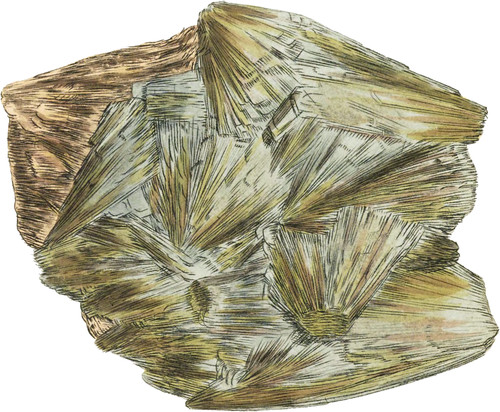 Enlarge
Enlarge
British Mineralogy
Massive Talc
- Class 2. Earths.
- Ord. 1. Homogeneous.
- Gen. 4. Silex.
- Spec. Talc.
Massive specimens of Talc occurring in large somewhat scopiform varieties may resemble Tremolite or the pale coloured Actinolite, or if darker coloured would approach in appearance to tab. 320, The less rigid fuel, the pliability, softness, &c. will readily distinguish it. The specimen selected for this figure is from Portsoy, in the neighbourhood of which place a great variety is found with such close resemblances to the above-mentioned minerals in many instances as to be difficultly distinguished, and at first sight seem passing, as it were, into them. The rhomboidal form of the nucleus is marked by lines upon the surface of the plates and is almost measurable, which much assists our discrimination; the angle is 120°. It crumbles rather readily, and will give the soft silvery gloss usual to Talc, by rubbing on the hand, &c. Actinolite irritates like Cowhage, as formerly mentioned. Bright and fine white Talc is very abundant in some parts of the East Indies, the native artists take advantage of it for a permanent colour, and in some states to represent the fine silvery inclining to pearly lustre of the scales of the fishes they make portraits of, which are so much admired in London. It is far preferable to Silver itself for such representations; it is also a valuable article for various purposes, and is sold at a handsome price when good. I should think it might be found in Scotland and Ireland as good as in the East Indies, if properly sought for.

